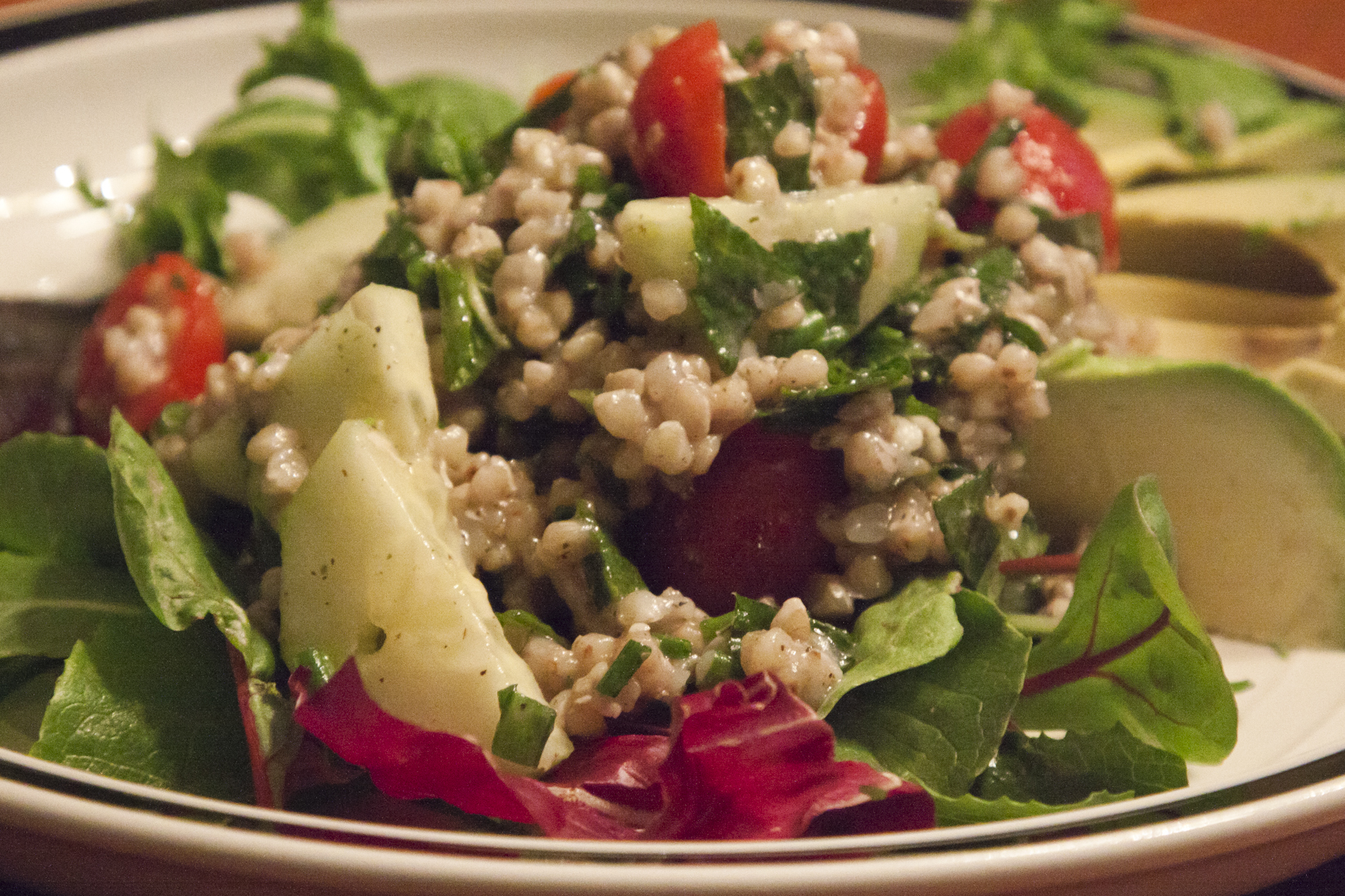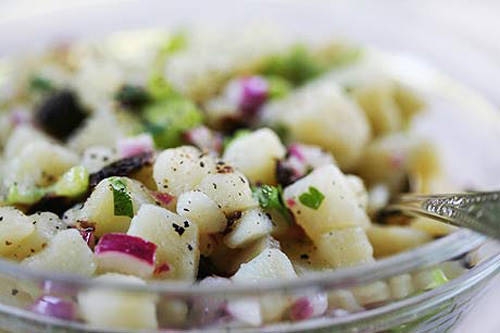It’s Independence Day. Our holidays give us the opportunities to spend with family and friends and what could be more American than a BBQ or picnic? I love our great American tradition of everyone-bring-a-dish-to-share. It opens the door for creating dishes that are a real treat and I also get to bring something my family and I like to eat. Scroll down for recipes that are not just cost conscious they are incredibly delicious.
Plus I get time to catch up on my research. Additional to my regular job of helping people get the health and quality of life they deserve, I’ve been contracted to a clinical trial for a drug free substance abuse treatment program (yes, I’m most definitely still in the clinical research arena). It’s been a tight schedule lately, so I also get to catch up on answering a pile of health questions.
One of the most common health questions I get involves grains—corporate interests have been blanketing us with their version of information, and pressuring our government, long before Harvey Wiley MD created the publicly popular 1906 Pure Food and Drugs Act and the U.S. Supreme Court ruled that no bleached milled white flour could enter interstate commerce (the 1906 law prohibits interstate commerce in misbranded and adulterated foods, drinks and drugs—this law still stands, although is never enforced). As a chemist and researcher, Dr. Wiley spent 50 years studying the health effects of processed foods, preservatives and artificial colors including saccharine, borax, salicylic acid, sulfuric acid, sodium benzoate and formaldehyde and in 1883 was appointed the Chief Chemist of the US Department of Agriculture’s Bureau of Chemistry (and what is now the FDA) where he made huge strides advocating for consumer health protection.
Unfortunately Dr. Wiley’s successor, Dr. Elmer Nelson, sided more with corporate interests and forced very literal and narrow interpretations of the Pure Food and Drugs Act. He was quoted as saying:
“It is wholly unscientific to state that a well-fed body is more able to resist disease than a poorly fed body. My overall opinion is that there hasn’t been enough experimentation to prove that dietary deficiencies make one susceptible to disease.”
A review of the existing scientific literature at that time shows a clear relation between nutrition and health.
In 1914, the U.S. Supreme Court ruled that in order for bleached flour with nitrite residues to be banned from foods, the government must show a relationship between the chemical additive and the harm it allegedly caused in humans. Largely based on Dr. Nelson’s testimony, the court ruled that the mere presence of a harmful ingredient was not sufficient to render the food illegal.
In other words, corporations can now add things to food and/or alter them from their original form unless or until the government proves that additive or alteration causes harm in humans. This interpretation is largely why white flour is considered the same as the original wheat grain, or genetically modified plants remain unlabelled and treated as if they are non-GMO. On a research note, demonstrating “harm” in human experiments is extremely tricky. It is usually considered unethical to give suspected toxics to people so scientists start with animals (which may or may not tell you what happens in people—or at least at what level of chemical). Meanwhile, the additive is used while we track health effects and look for patterns in historical data. Not only is this a bit too late, legally it rarely “proves” anything. Fewer than 5 percent of the chemicals in use today have been tested for safety; of the 80,000 or so chemicals in use, only 3 have been banned. (A good review is here)
That said, are any grains—whole or not, organic or not—actually good for us ? I bring you:
? I bring you:
- Information on why grains are unhealthy, and;
- Ideas—what can we eat?
The second answer is easiest. Just learn to make a few substitutions and  you can take a non-nutritious item that was designed from cheap imposter anti-foods and turn it into the (usually more authentic) dish it was always suppose to be. And that is exactly what I did here:
you can take a non-nutritious item that was designed from cheap imposter anti-foods and turn it into the (usually more authentic) dish it was always suppose to be. And that is exactly what I did here:
Untraditional Buckwheat Tabbouleh Salad
Back to grains—I am asked nearly every day about this, the base of the USDA Food Pyramid (now “MyPlate”) recommends many servings of grains, breads, pasta, cereal, all day every day. How many of us grew up with this nutrition advice and have now passed this on to our children?
Because of the devastating health effects of grains, grain products, and grain sugars, the first dietary change to make if you want better health is to remove these from your pantry and food habits. None of the recipes on this site include any grains or grain sugars (corn syrup, cane sugar). Whether you already follow a wheat-free, gluten-free or grain-free diet or are looking at the issue for the first time, I hope these explanations help.
Pro-grain argument #1: Our ancestors lived on grains and we should be well adapted to them by now.
Mostly false: We have actually not been eating grains for very long time historically speaking. Not only that, eating grains occasionally is also a lot different than the currently-recommended three servings or more per day—that dietary change happened very, very recently.
Archeologists generally agree that for about 1.5 million years, humans and predecessors ate a combination of land mammals (including organs, fat and marrow), cooked tubers, seafood (fish, mammals, shellfish, seaweed), eggs, nuts, fruit, honey, “vegetables” (stems, leaves, etc.—the term “vegetable” has a culinary meaning only, no botanical meaning), mushrooms, assorted land animals, birds and insects.
About 10,000 years ago, some of these Paleolithic societies made the shift from hunting and gathering to growing crops and raising livestock. There is evidence that emmer, an early ancestor of wheat, was grown in the fertile crescent of the Middle East about 11,500 years ago. Rice appears in what is now China about 10,000 years ago and an ancestor of corn appears in Central America about 9,000 years ago.
But here’s the tricky part: Although these grains may have been included in the diet, they did not become a major part of it until much more recently. For Americans, this may have been 100-200 years ago and many Africans have never included grains in their diet. Europeans were probably the earliest regular wheat and barley consumers at about 7000 years ago. Corn did not become widely used until perhaps 1200 years ago and, until recently, the Chinese did not commonly consume rice as a food rather it was fermented into an alcoholic beverage.
The question remains: how much time does it take to adapt a body so it can digest and handle a new food? Mathematically, 7,000 years is enough generations to show genetic adaptation. But in the high proportions recommended by the USDA, our bodies would have had to develop substantial means for counteracting natural grain toxins, counteracting hormone shifts caused by grains, and improved ability to digest and extract nutrients from grains.
When our genetic code changes through adaptation, it is because those who inherit the code that promotes greater survival tend to produce more surviving children than those who do not inherit that genetic pattern. Their children and their children’s children produce more children (increasing the prevalence of that genetic code in the population) while the less healthy tend to phase out. Eventually, after enough time and generations, the more survival genetic pattern becomes more common.
In other words, the genetic code will change in order to solve the problems the grains were causing. Where the code is changed tells a lot about the health problems. When it comes to grains these are (so far):
- Digestion: the starch-digesting enzyme amylase is sometimes found in multiple copies (resulting in higher enzyme levels) among individuals who descend from peoples who eat wheat or rice (Europeans and Chinese both have multiple copies).
- Cholesterol: apolipoprotein B genes are modified in a portion of individuals who descend from wheat eating peoples.
- Blood Pressure: angiotensin-converting enzyme (ACE) is modified more frequently among individuals who descend from wheat-eating peoples.
- Because rice was more commonly fermented, Chinese people often have a gene variant that causes the rapid conversion of alcohol into something that is not intoxicating but instead causes a red flush.
Until very recently humankind consumed wild grains in small amounts. The seeds were also carefully prepared, they were soaked first so they would begin to sprout, a process that neutralizes some of the toxins. In the last century (4-5 generations) sprouting grains was largely abandoned while grain consumption soared. One result? Even among Europeans, a people with the longest history of consuming grains, nearly 1% have full-blown Celiac’s disease and have not been protected by genetic adaptation.
If you do not descend from these races (or if you consume large quantities of grains unfamiliar to your race—which may include most commercial strains today) grains will have even more influence on unwanted weight gain, cholesterol levels, blood pressure, and other health effects because your genetic line has not developed even these few protective adaptations.
Archeological measures show that those cultures who transitioned to grains as the primary source of calories also became shorter in stature and developed osteopenia, osteoporosis, dental decay and dental crowding worldwide. That’s what the archaeology says, and there is no controversy about it.
Pro-grain argument #2: Grains are cheap and contain lots of amino acids and minerals.
Answer: Yup, they are cheap—that is why they are loved by commercial interests. As to the second thought, this might be true if your body could digest and absorb these nutrients; therein lies the problem.
Practically every plant food contains some kind of toxin, but grains produce a number of nasty ones. Phytic acid, for example, strongly inhibits the absorption of a number of important minerals. Heat-resistant lectins (gluten, and gliadin stimulate the immune system in an unhealthy way, for example) Wild tubers, which were our main carbohydrate source for about 1.5 million years before agriculture, contain less phytic acid and no heat-resistant lectins. Coincidentally, average human height decreased when humans adopted grain-based agriculture.
To address these problems, seeds, including grains, were historically treated differently than today’s machine-ground or quick-processed products. Our predecessors soaked, sprouted and used long fermentation that neutralized the grain toxins, making them more nutritious and digestible. Soaking, sprouting or fermenting grains activates enzymes that break down most of the toxins. Always soak rice, barley and other grains overnight and then drain and leave them on the counter the day before cooking them.
Because corporations do not take the time to prepare grains this way, we consume higher levels of their toxins in grain-based food products. Unfermented, unsprouted “whole wheat” bread may actually be the worst of all. (“the term “whole wheat” can be used on any product that is made up of substantially all of the whole grain parts—it does not have to be the intact grain, just the sum or most of its parts added back together after processing.)
Pro-grain argument #3: Because grains are so readily grown in large volumes, they are the means to feed the world’s expanding population, especially third world countries.
Today’s commercial food crops and animals are not similar to the wild strains of our pre-agricultural ancestry or even more recent heritage strains. Today’s vegetables and fruits have been selectively bred (or engineered) to have many traits that make them different from their wild cousins. The same is true of our domesticated animals. In addition to this selective breeding, the farm-raised food we eat today gets its nutrition (from fertilizers to grain) quite differently than any of their wild counterparts. This dramatically shifts the nutrient content of these foods.
Most commercial grains today are deficient in nutrients, are a “study in pesticide application,” beginning with the seeds being treated with mercury-containing fungicide, and many have been engineered to grow in the presence of the weed-killer RoundUp. Not only do these food crops contain traces of RoundUp—a neurotoxin that accumulates in the fatty tissues of your body—the active RoundUp chemical, glyphosphate, prevents mineral and other nutrient absorption from the soils and commonly results in these plants having fungal infections so they are sprayed with more hormones and pesticides. Even the bins in which the harvested wheat is stored have been coated with insecticides. If bugs appear on the wheat in storage, they fumigate the grain. Another popular engineering feat is to add a gene so that crops can produce their own pesticides; another fat-stored neurotoxin. We have only a small idea of the health problems this is causing; of course thanks to the 1914 Supreme Court ruling, the burden of proof rests with the government and/or you the consumer.
It may be humanitarian to send food to impoverished countries and to pay our farmers to do so. The quality of the food should be nutritious and safe.
And one more thing:
We need to have certain bacteria (thousand’s of bacterial species) in our gut to digest the complex starches in grains. Not only does this support the idea that grains were incorporated into our diet very recently, it also points out another complex problem of eating unfermented grains.
Corn, wheat, barley, oats, these all change the acid levels in our gut and that kills the very bacteria we need to have living within us. A single course of antibiotics also kills the helpful bacteria we need changing our digestive tract permanently or until we do something to restore its health. Meanwhile, we continue to eat improperly prepared grains and grain products in our breads, pastas, crackers, cookies, and cakes… we consume vast quantities of added corn and cane sugars in these same products. This is a lethal digestive combination where the “good” bacteria are killed off and our USDA dietary advice promotes products that feed the unhealthful bacteria (and yeast and parasites) that live off sugar/starches in an acidified environment. These infectious organisms release toxins instead of nutrients into our blood stream. This is also true for cows and other animals fed grains, even “grain finished.”
Very recently, a study looked at changes in gut bacteria among children with celiac’s disease. The study evaluated the same children when they had symptoms and when the disease was put in remission by using a gluten free diet. The bacterial profiles were profoundly different and converted from very unhealthy to high in probiotics when celiac symptoms went in remission.
Today, get your independence from weight gain, aches & pains and fatigue. It’s time to get off the grain train and replenish yourself.
The important points to take away are, beware of any processed food because chemicals and cheap “filler” grains (plus soy) are always used. And we simply don’t know what the long-term effects will be of ingesting chemicals, on top of chemicals, on top of more chemicals.
Strive to use whole unprocessed foods that are as fresh and close to their natural state as possible.
If you’re going to eat grains make sure they are at least whole, organic, and sprouted; eat them in small amounts and infrequently.
Probably the “safest” grains are properly prepared wild and heritage rices (e.g. Forbidden rice and Wehani rice). In my hands using Nutrition Response Testing, these tend to work better for most people. But make sure the amount you eat aligns with your personal health goals.
Copyright © 2012. Marie Sternquist. All Rights Reserved.








My cousin recommended this web site. I was never sure what to do about my digestive problems; now I have healthy options.
You’re wonderful! Thank you!
Thank you Analisa! I’m glad the info and healthy recipes are helping you. –Marie
Pingback: Why We Get Fat (part 2)
Pingback: Food Sensitivity? Food Allergy? Navigating the Adventure.
WOW – what an eye opener! I always feel yucky the next day after eating a hamburger from a restaurant or after eating whole wheat bread sandwich at lunch. My problem – is the simplistic way to eat lunch is with a “sandwich” spreading any mustard on lettuce and putting meat and cheese in between just “seems” weird. And PB&J would taste really weird on lettuce. Bread, crackers, and pasta have been the “fillers” of a meal most of my life – so now what do I “fill” or round out a meal without these carbs? I love potatoes – I’m just ignorant about what foods go together in our bodies.
Hi – thanks for reading and glad it is helpful. Yes, it is true that if we want good health we may have to retrain decades (generations?) of using cheap filler foods instead of nutritionally sound building blocks. Did you know that in today’s dollar, we actually spend a much smaller portion of our income on food than 20 years ago–we chose cheap filler foods so we could buy our flat screen TVs. We have certainly been taught some interesting things by companies desiring to make the almighty buck and when it comes to food, the message has been “high volume and cheap” instead of “quality nutrition.” And that also translates to massive income and profits for drug companies who sell the quick fix for all those health complaints actually being caused by malnutrition and “high volume / cheap.”
Sure, retraining what we think is “wierd” or “desirable” can be a challenge and that is exactly why I created this blog and these recipes. Try to mix up the sandwich idea with other options. Baseball Beef Sticks and Football Chicken Satay were both created to make a portable lunch; so are a few of the salads. Remember, part of it is to choose quality starting materials. Try putting your PB&J on Alvarado Street Sprouted Barley Bread. They sprout their grains and use raisins as the only source of sweetening to make an incredible yeast bread that gets a “pass” even from my 13-year-old. That said, just go easy on even the best grain products and don’t use them every day. No matter what we’d like, grains will always cause weight gain and will acidify the gut potentially altering the bacteria that live there and/or creating indigestion. Hope this helps.
Yours in health! –Marie
Mary and I miss you – as soon as I have income coming in – we WILL be back. Thank you for all your helpful knowledge!
Joanne Dehut
Hi – I miss you two also, it has been fun watching you both really winning. Meanwhile, stay on your healthier path and enjoy!!
Marie Sternquist
How informative and very interesting! Thanks for sharing this research:-)